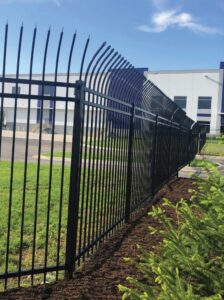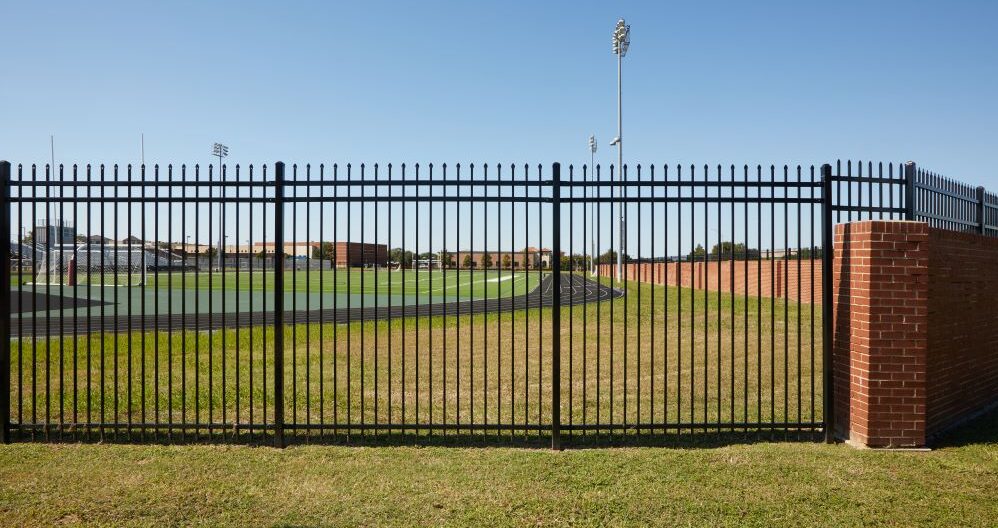Safer school designs often evoke images of school buildings that use advanced technology and building materials to deter, delay and deter violent intruders, from state-of-the-art surveillance systems to burglar-resistant glass doors and windows. But improved school security begins at the perimeter fence, well in front of the building facade.
K-12 safety and security begins at the district level and includes multiple layers and protocols to protect teachers, students and visitors from violent threats, according to the Partner Alliance for Safer Schools (PASS) School Safety Guidelines for K-12 Schools. Known as the layered approach to school safety, it helps improve the overall effectiveness of a comprehensive school safety plan.
Related article: PASS releases update to safety guidelines for K-12 schools
Considering that data from the K-12 School Shooting Database shows that 80% of school shootings occur outside, multiple physical security measures in the front of a school can be critical to a comprehensive, safer school design. Improved physical security at the edge of campus can help create multiple barriers and security redundancies in subsequent layers for increased safety.
A layered approach to school safety begins physically at the edge of campus
According to PASS guidelines, making schools safer starts with policies and protocols. These efforts include access control policies, visitor monitoring, working with first responders, lockdown protocols and more. They set the pace for security measures that can be implemented on individual campuses.
——Article continues below——
PASS also divides the school campus into four different levels: classroom scope, building scope, campus scope, and digital infrastructure scope. Each level involves unique considerations and challenges to ensure safety effectiveness and code compliance. Although PASS separates these layers, it is important to understand that all four layers of physical security work together to provide a unified front against multiple types of violent threats.
However, the campus boundary can often be the first barrier an intruder encounters. On campus property, school administrators may apply Crime Prevention Through Environmental Design (CPTED) principles, including the use of landscaping and security fencing to meet recommendations for basic security.
Related article: 5 CPTED Strategies to Protect Students and Employees
Subsequent measures such as gates, video surveillance, security patrols and more can strengthen the protective ability of this layer. Combined, these measures can provide an appropriate level of security for students and faculty while providing a strong visual deterrent to potential intruders.
How to choose the right boundary fence
As described in the PASS guidelines, the campus perimeter may include “the most externally visible security deterrents to an external threat.” When project teams choose the right fence, they can establish a clear boundary and clarify the level of security an intruder will encounter at subsequent levels. But what does the “right” fence look like? How can it improve current security levels and lay the foundation for future improvements?

Galvanized and powder-coated steel fences resist corrosion and weather damage, ensuring a longer lifespan. Photo courtesy of Fortress Building Products
School administrators and planners are encouraged to work with safety experts when evaluating the suitability of fencing options. With this in mind, the appearance of a fence can often be just as important to providing a visual deterrent as its strength and engineering.
A tall fence that has anti-climbing devices such as closely spaced slats or slats that curve outward at the top can deter intruders and even stop them completely before they gain entry to a school. If these fences also feature tamper-evident designs and hard-to-reach or security locks, they can provide further strong protection against external threats. Finally, high-security fences that maintain open lines of sight can help security patrols and front desk guards more easily identify and respond to incoming threats, freeing up time for school staff to engage in established security procedures such as protection plans.
Thoughtful fence design can strike a balance between safety and the aesthetics of the school community. Options like decorative steel posts and black powder-coated finishes can convey strength without being oppressive, helping schools create a welcoming environment while prioritizing safety.
Why fence strength and technology are key to perimeter security
Fencing must be strong and constructed to withstand multiple types of intrusions. This can range from resistance to vehicle impacts to protection from bolt cutters and other common tools. It may also include features that make it difficult to climb or slip under a fence.
Related Article: Does Your School Consider These Safety Basics?
When it comes to strength, chain link and wood fences may not provide enough protection to meet a school's safety goals. These options can be breached by both moderate and untrained threats. For example, an external threat after school hours might cut or bend a section of a chain link to allow easy access at the time of the attack. Both fence options can also be vulnerable to ramming attacks.
Although the initial investment in high security steel fencing may be higher than alternatives, the long-term benefits such as lower maintenance, longer life and stronger deterrence make it a more cost-effective and valuable choice. Powder-coated and galvanized surfaces further increase a steel fence's resistance to weather and corrosion, minimizing future repair or replacement costs.
In addition, steel fences are easier to equip with anti-climbing features and stackable structures to strengthen defenses at the top and bottom of the fence. Anti-climbing features prevent or significantly slow scaling to allow school monitors to respond to external threats before they reach a school building. Likewise, the stackable construction allows the fence panels to conform to sloped terrain to reduce gaps between the fence and the ground and further reduce potential entry points.
While steel security fences may initially cost more than alternatives such as wood or wire mesh, the long-term benefits – including improved aesthetics, reduced maintenance, longer life and stronger deterrence – make them a more cost-effective choice over the life of the fence.
Integrate fencing with other physical security measures on campus
While strength and smart engineering are critical to ensuring that a fence provides the greatest possible protection against unauthorized access, it is also important that these physical barriers work in concert with other security measures to ensure a unified front against violent threats.
For example, rackable design can work with berms and other anti-vehicle landscaping to limit access to threats, whether they are in vehicles or on foot. The CPTED principles suggest that layered visibility (combining fence transparency, lighting, and clear lines of sight) improves surveillance capabilities while reducing the likelihood of covert activity. Selecting a steel fence that adheres to these principles ensures that the fencing improves both passive and active surveillance.
Deterrence, delay and denial from the property line to the classroom door
It is widely accepted that no single physical security measure can be 100% effective in stopping threats to life safety. Although fencing can help improve the overall level of safety on school grounds in several ways, it is not the only factor. Next-generation perimeter solutions work with landscaping, active surveillance, building security and other security initiatives to create various obstacles to deter, delay and deter intruders.
Properly selected security fences offer measurable security benefits – from restricting access to improving surveillance capabilities. Furthermore, they do so without the often unintended consequences of using less safe and less suitable options.
When choosing a school security fence, look for the following six features for optimal protection:
- Anti-climbing design
- Tamper-proof closures
- Rackable panels for varied terrain
- Powder coated for weather resistance
- Ability to maintain clear lines of sight
- Compatible with access control systems
A strong, well-engineered fence can serve as a first line of defense against outside threats. Effective perimeter solutions can stop intruders in their tracks or delay them long enough for students and faculty to alert first responders and initiate lockdown measures.
Eric Kell, Director of Commercial Sales at Fortress Building Products, has been in the fencing industry for the past seven years.

